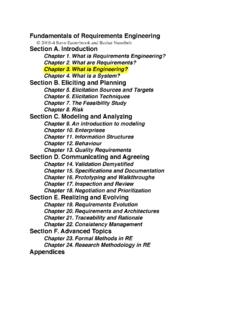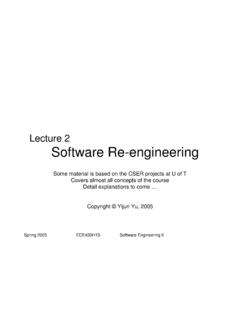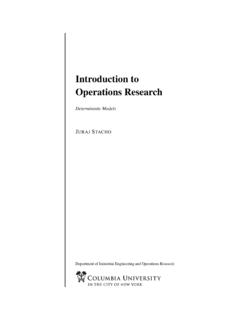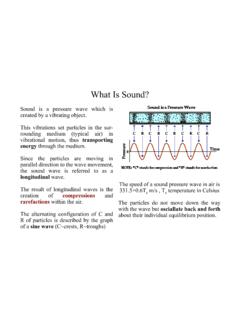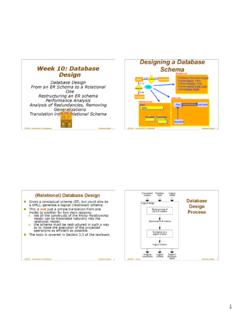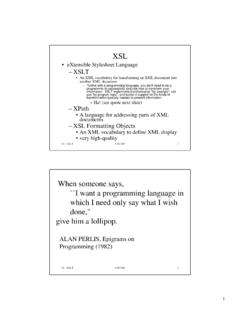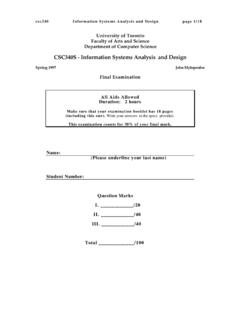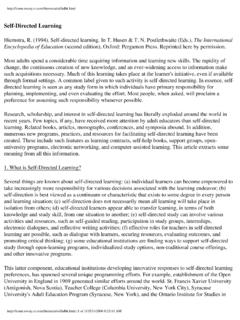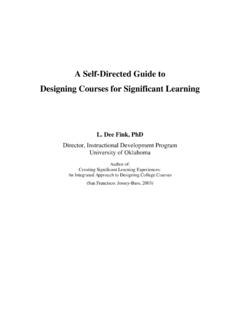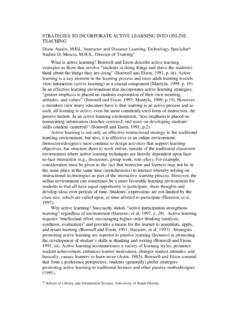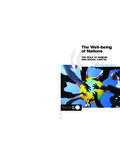Transcription of A Fast Learning Algorithm for Deep Belief Nets
1 LETTERC ommunicated by Yann Le CunA fast Learning Algorithm for deep Belief NetsGeoffrey E. of Computer Science, University of Toronto, Toronto, Canada M5S 3G4 Yee-Whye of Computer Science, National University of Singapore,Singapore 117543We show how to use complementary priors to eliminate the explaining-away effects that make inference difficult in densely connected Belief netsthat have many hidden layers. Using complementary priors, we derive afast, greedy Algorithm that can learn deep , directed Belief networks onelayer at a time, provided the top two layers form an undirected associa-tive memory.
2 The fast , greedy Algorithm is used to initialize a slowerlearning procedure that fine-tunes the weights using a contrastive ver-sion of the wake-sleep Algorithm . After fine-tuning, a network with threehidden layers forms a very good generative model of the joint distribu-tion of handwritten digit images and their labels. This generative modelgives better digit classification than the best discriminative Learning al-gorithms. The low-dimensional manifolds on which the digits lie aremodeled by long ravines in the free-energy landscape of the top-levelassociative memory, and it is easy to explore these ravines by using thedirected connections to display what the associative memory has in IntroductionLearning is difficult in densely connected, directed Belief nets that havemany hidden layers because it is difficult to infer the conditional distribu-tion of the hidden activities when given a data vector.
3 Variational methodsuse simple approximations to the true conditional distribution, but the ap-proximations may be poor, especially at the deepest hidden layer, wherethe prior assumes independence. Also, variational Learning still requires allof the parameters to be learned together and this makes the Learning timescale poorly as the number of parameters describe a model in which the top two hidden layers form an undi-rected associative memory (see Figure 1) and the remaining hidden layersNeural Computation18, 1527 1554(2006)C 2006 Massachusetts Institute of Technology1528G.
4 Hinton, S. Osindero, and Teh2000 top-level units500 units 500 units 28 x 28 pixel image10 label unitsThis could be the top level of another sensory pathwayFigure 1: The network used to model the joint distribution of digit images anddigit labels. In this letter, each training case consists of an image and an explicitclass label, but work in progress has shown that the same Learning algorithmcan be used if the labels are replaced by a multilayer pathway whose inputsare spectrograms from multiple different speakers saying isolated digits.
5 Thenetwork then learns to generate pairs that consist of an image and a spectrogramof the same digit a directed acyclic graph that converts the representations in the asso-ciative memory into observable variables such as the pixels of an hybrid model has some attractive features: There is a fast , greedy Learning Algorithm that can find a fairly goodset of parameters quickly, even in deep networks with millions ofparameters and many hidden layers. The Learning Algorithm is unsupervised but can be applied to labeleddata by Learning a model that generates both the label and the data.
6 There is a fine-tuning Algorithm that learns an excellent genera-tive model that outperforms discriminative methods on the MNIST database of hand-written digits. The generative model makes it easy to interpret the distributed rep-resentations in the deep hidden fast Learning Algorithm for deep Belief Nets1529 The inference required for forming a percept is both fast and accurate. The Learning Algorithm is local. Adjustments to a synapse strengthdepend on only the states of the presynaptic and postsynaptic neuron. The communication is simple.
7 Neurons need only to communicatetheir stochastic binary 2 introduces the idea of a complementary prior that exactlycancels the explaining away phenomenon that makes inference difficultin directed models. An example of a directed Belief network with com-plementary priors is presented. Section 3 shows the equivalence betweenrestricted Boltzmann machines and infinite directed networks with 4 introduces a fast , greedy Learning Algorithm for constructingmultilayer directed networks one layer at a time. Using a variational bound,it shows that as each new layer is added, the overall generative modelimproves.
8 The greedy Algorithm bears some resemblance to boosting inits repeated use of the same weak learner, but instead of reweightingeach data vector to ensure that the next step learns something new, it re-represents it. The weak learner that is used to construct deep directednets is itself an undirected graphical 5 shows how the weights produced by the fast , greedy al-gorithm can be fine-tuned using the up-down Algorithm . This is acontrastive version of the wake-sleep Algorithm (Hinton, Dayan, Frey,& Neal, 1995) that does not suffer from the mode-averaging prob-lems that can cause the wake-sleep Algorithm to learn poor 6 shows the pattern recognition performance of a network withthree hidden layers and about million weights on the MNIST set ofhandwritten digits.
9 When no knowledge of geometry is provided and thereis no special preprocessing, the generalization performance of the networkis errors on the 10,000-digit official test set. This beats the by the best backpropagation nets when they are not handcraftedfor this particular application. It is also slightly better than the errorsreported by Decoste and Schoelkopf (2002) for support vector machines onthe same , section 7 shows what happens in the mind of the network whenit is running without being constrained by visual input.
10 The network has afull generative model, so it is easy to look into its mind we simply generatean image from its high-level the letter, we consider nets composed of stochastic binaryvariables, but the ideas can be generalized to other models in which the logprobability of a variable is an additive function of the states of its directlyconnected neighbors (see appendix A for details).1530G. Hinton, S. Osindero, and TehFigure 2: A simple logistic Belief net containing two independent, rare causesthat become highly anticorrelated when we observe the house jumping.
